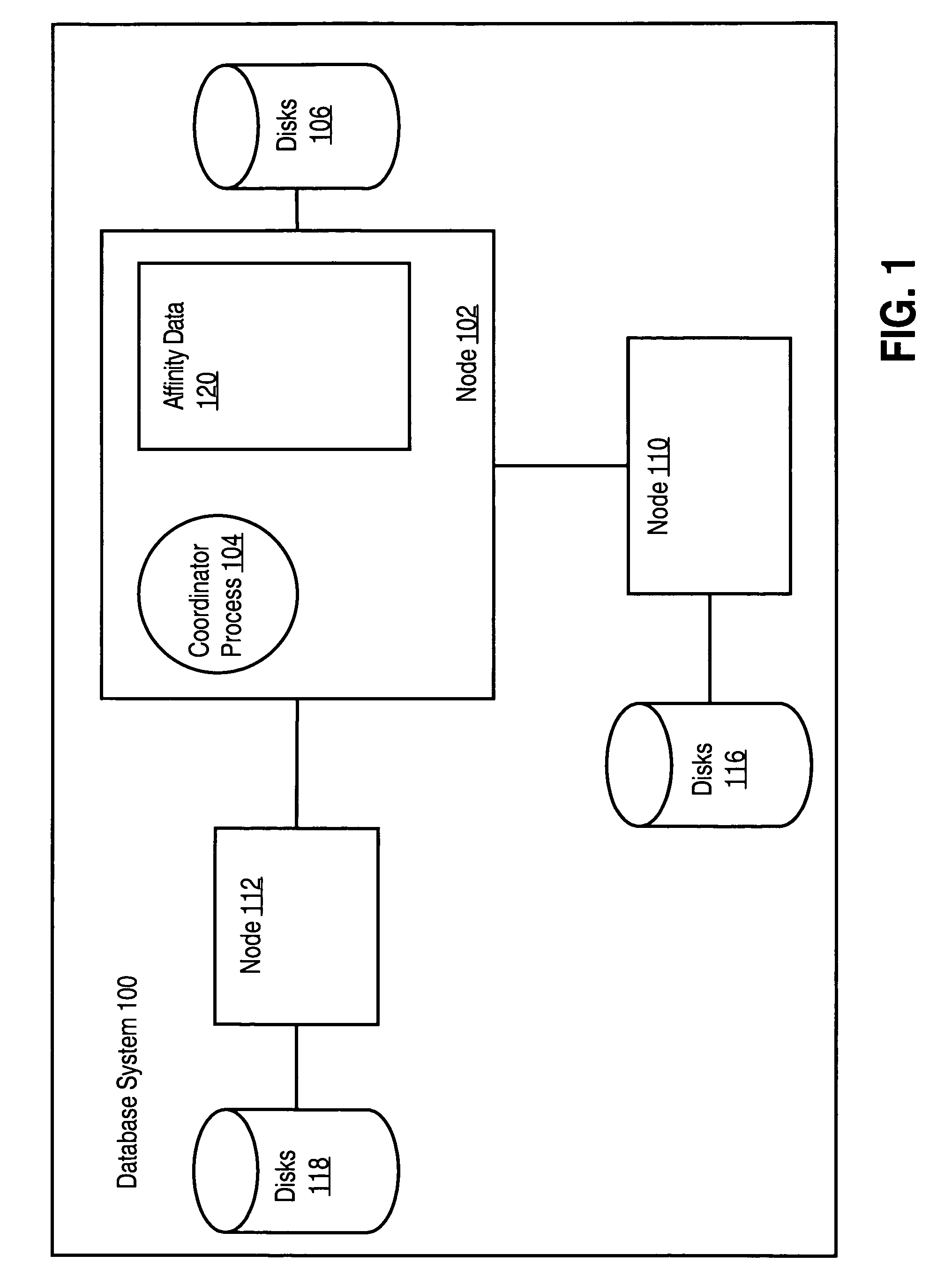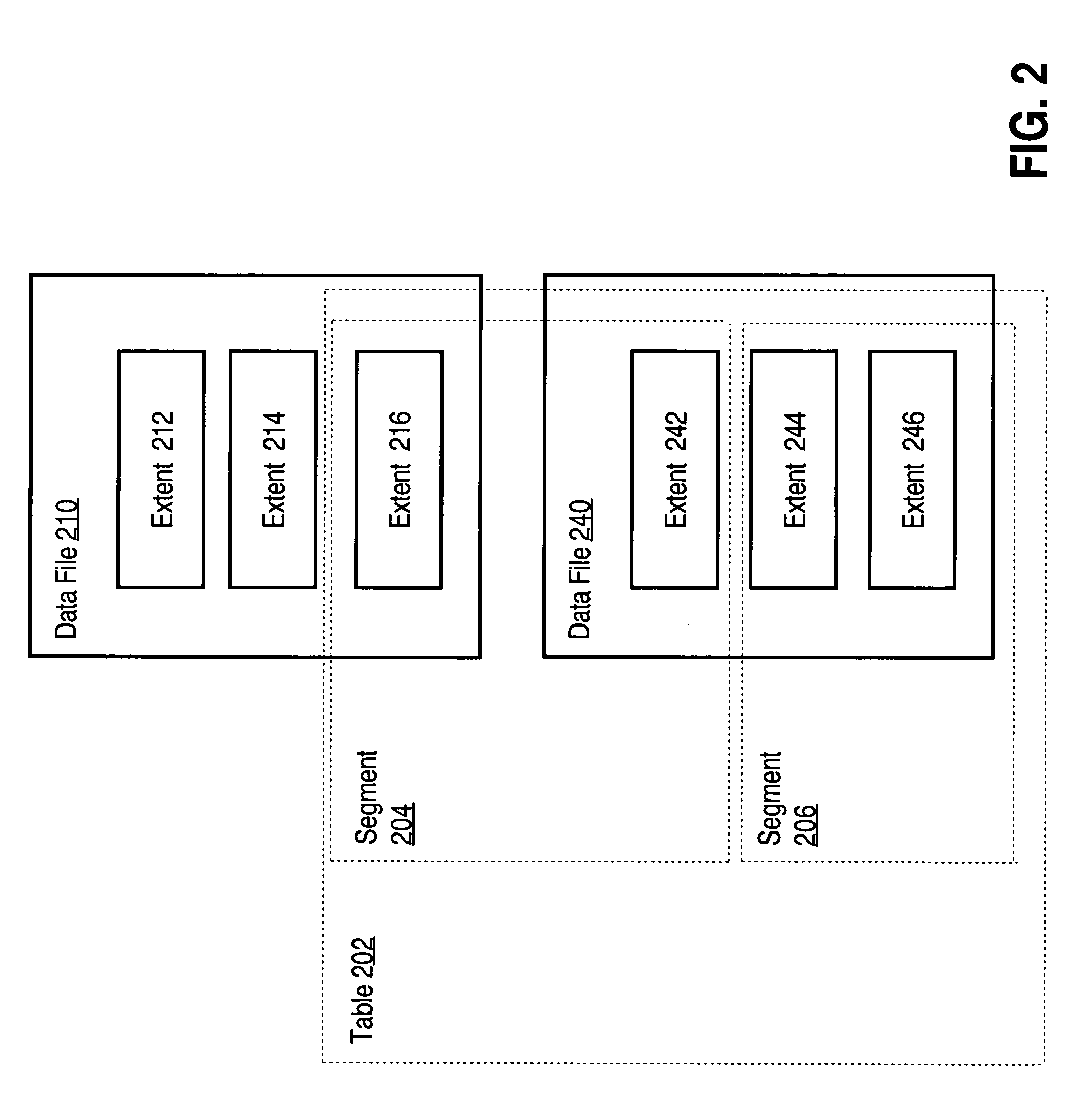Managing parallel execution of work granules according to their affinity
a technology of work granules and affinity, applied in the field of parallel task execution, can solve the problems of skewed workload distribution, power waste, and less efficient use of multi-processing systems
- Summary
- Abstract
- Description
- Claims
- Application Information
AI Technical Summary
Benefits of technology
Problems solved by technology
Method used
Image
Examples
Embodiment Construction
[0026]A method and apparatus for managing the parallel execution of work granules is described. In the following description, for the purposes of explanation, numerous specific details are set forth in order to provide a thorough understanding of the present invention. It will be apparent, however, to one skilled in the art that the present invention may be practiced without these specific details. In other instances, well-known structures and devices are shown in block diagram form in order to avoid unnecessarily obscuring the present invention.
Operational Overview
[0027]A task is evenly distributed between a quantity of work granules. Distributing work evenly between work granules tends to reduce work load skew. The quantity of work granules to which work is distributed is adjusted, as needed, to fall between a threshold minimum and a threshold maximum. The threshold minimum and maximum may be configured to balance a variety of efficiency factors, including workload skew and overhe...
PUM
 Login to View More
Login to View More Abstract
Description
Claims
Application Information
 Login to View More
Login to View More - R&D
- Intellectual Property
- Life Sciences
- Materials
- Tech Scout
- Unparalleled Data Quality
- Higher Quality Content
- 60% Fewer Hallucinations
Browse by: Latest US Patents, China's latest patents, Technical Efficacy Thesaurus, Application Domain, Technology Topic, Popular Technical Reports.
© 2025 PatSnap. All rights reserved.Legal|Privacy policy|Modern Slavery Act Transparency Statement|Sitemap|About US| Contact US: help@patsnap.com



